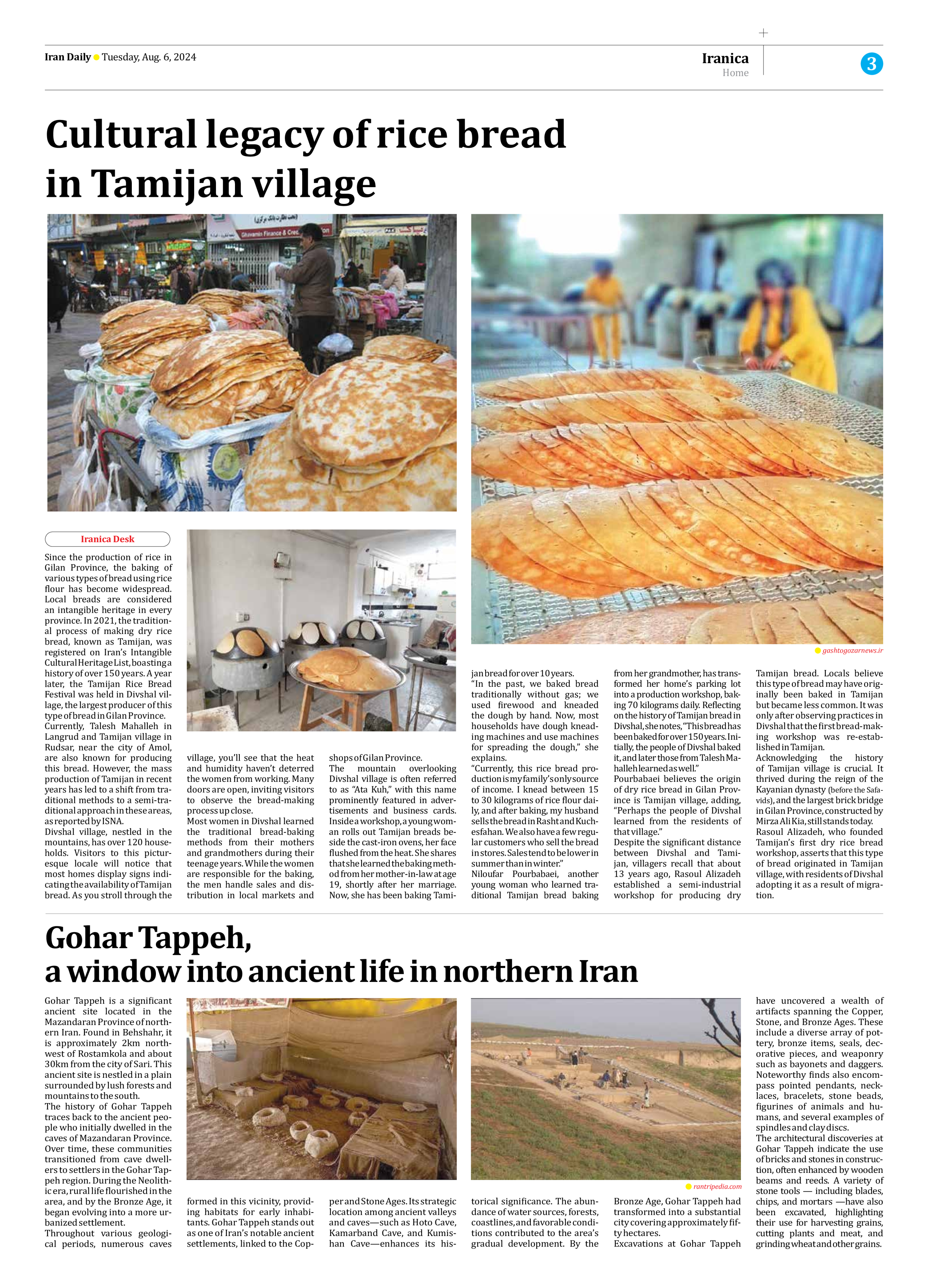
Cultural legacy of rice bread in Tamijan village
Since the production of rice in Gilan Province, the baking of various types of bread using rice flour has become widespread. Local breads are considered an intangible heritage in every province. In 2021, the traditional process of making dry rice bread, known as Tamijan, was registered on Iran’s Intangible Cultural Heritage List, boasting a history of over 150 years. A year later, the Tamijan Rice Bread Festival was held in Divshal village, the largest producer of this type of bread in Gilan Province.
Currently, Talesh Mahalleh in Langrud and Tamijan village in Rudsar, near the city of Amol, are also known for producing this bread. However, the mass production of Tamijan in recent years has led to a shift from traditional methods to a semi-traditional approach in these areas, as reported by ISNA.
Divshal village, nestled in the mountains, has over 120 households. Visitors to this picturesque locale will notice that most homes display signs indicating the availability of Tamijan bread. As you stroll through the village, you’ll see that the heat and humidity haven’t deterred the women from working. Many doors are open, inviting visitors to observe the bread-making process up close.
Most women in Divshal learned the traditional bread-baking methods from their mothers and grandmothers during their teenage years. While the women are responsible for the baking, the men handle sales and distribution in local markets and shops of Gilan Province.
The mountain overlooking Divshal village is often referred to as “Ata Kuh,” with this name prominently featured in advertisements and business cards. Inside a workshop, a young woman rolls out Tamijan breads beside the cast-iron ovens, her face flushed from the heat. She shares that she learned the baking method from her mother-in-law at age 19, shortly after her marriage. Now, she has been baking Tamijan bread for over 10 years.
“In the past, we baked bread traditionally without gas; we used firewood and kneaded the dough by hand. Now, most households have dough kneading machines and use machines for spreading the dough,” she explains.
“Currently, this rice bread production is my family’s only source of income. I knead between 15 to 30 kilograms of rice flour daily, and after baking, my husband sells the bread in Rasht and Kuchesfahan. We also have a few regular customers who sell the bread in stores. Sales tend to be lower in summer than in winter.”
Niloufar Pourbabaei, another young woman who learned traditional Tamijan bread baking from her grandmother, has transformed her home’s parking lot into a production workshop, baking 70 kilograms daily. Reflecting on the history of Tamijan bread in Divshal, she notes, “This bread has been baked for over 150 years. Initially, the people of Divshal baked it, and later those from Talesh Mahalleh learned as well.”
Pourbabaei believes the origin of dry rice bread in Gilan Province is Tamijan village, adding, “Perhaps the people of Divshal learned from the residents of that village.”
Despite the significant distance between Divshal and Tamijan, villagers recall that about 13 years ago, Rasoul Alizadeh established a semi-industrial workshop for producing dry Tamijan bread. Locals believe this type of bread may have originally been baked in Tamijan but became less common. It was only after observing practices in Divshal that the first bread-making workshop was re-established in Tamijan.
Acknowledging the history of Tamijan village is crucial. It thrived during the reign of the Kayanian dynasty (before the Safavids), and the largest brick bridge in Gilan Province, constructed by Mirza Ali Kia, still stands today.
Rasoul Alizadeh, who founded Tamijan’s first dry rice bread workshop, asserts that this type of bread originated in Tamijan village, with residents of Divshal adopting it as a result of migration.







